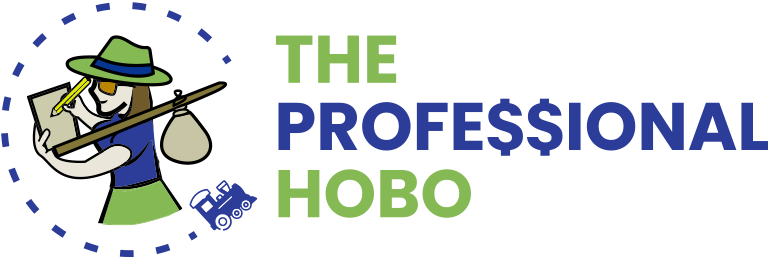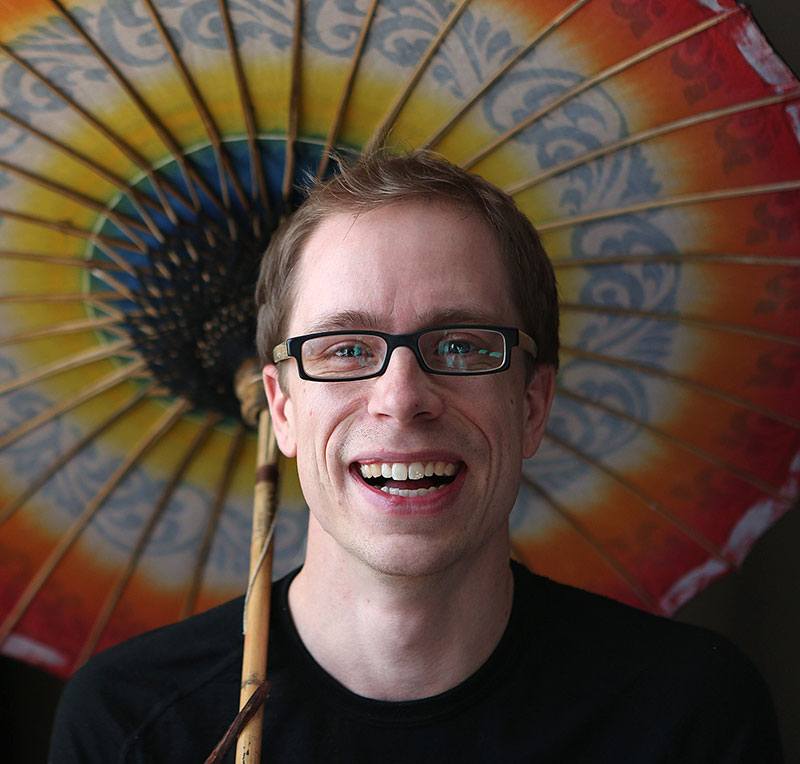Dustin Main is an entrepreneur, adventure traveler and photographer from Saskatoon, Canada who started his first company at 24. After leaving Canada to travel the world in 2009 on what was to be a one-year journey, life changed and that one year has turned into seven. While exploring the earth, he’s starting new businesses, doing things in a school girl’s dress for charity, climbing peaks, and telling stories. He has a keen interest for the more complicated and lesser known locations on the planet and has spent five years documenting the changes in Myanmar for the project “This Myanmar Life.”
Since 2009, he has documented his travels on Dustin Main’s “A Skinny Escape.”
This post was originally published in 2017. It has since been updated for accuracy of links and content.
In this series, we’re exploring the various careers of world travelers, and how they make ends meet financially while living abroad. Yes, financially sustainable full-time travel is possible!
How long have you been living/working on the road, and where have you traveled to?
I left Canada in 2009, and traveled to all seven continents by the time I was 30. Over the years, I’ve visited ~35 countries and lived in six. The main places that I seem to be going back to again and again include Berlin, Chiang Mai, New Zealand, Jordan and Myanmar.
Please describe what you do for income.
I started my first company (which is in technology services) in Canada in 2005. After four years of building it, I was feeling burnt out and decided to travel the world for a year, but not before prepping it so I could oversee it while I travel.
Since leaving Canada, I co-founded Too Many Adapters where we write about the convergence of technology and travel.
I do freelance photography work, as well as sell some as stock through Lightmoves Creative.
In 2016, I began running “Un-Tours to Myanmar“, a place that I’ve traveled to more than a dozen times in the past five years while working on my documentary photography project “This Myanmar Life.”
How many hours per week do you work on average?
This really depends on where I am, and how you define “work.” If we’re talking about time in front of the computer, working on projects that create income, I’d say probably 10-20 per week. This is greatly reduced when I’m in a country like Myanmar, and higher when I’m catching up in North America.
How much money do you make?
I make about $60,000 CAD/year, and my income is stable. 75% of that is from the technology services company I oversee, 15% from the tours, and 10% from photography and writing.
Do you make enough money to support your lifestyle?
My lifestyle is pretty inexpensive to maintain, and I save a decent amount (>35% of my after-tax income). I’ve been working to diversify my income even more in the past few years, and since my tours have really taken off, I plan to have a decent increase in income in 2017 thanks to them.
What do you like most about your career and lifestyle?
I love the freedom to go and do what I like while exploring the world, and work on projects that are meaningful to me without having to worry about monetizing them. I’m an adventurer at heart.
For all of the years growing up and living in Canada, I always felt something was missing. That something was a community/tribe that I’ve now found thanks to traveling, blogging, twitter, and gatherings like the World Domination Summit.
I have excellent friends dotting the globe, who I keep in touch with regularly thanks to the technology that lets me work while abroad, and see face-to-face several times of the year thanks to conferences and shared locations we frequent.
What are some of the challenges you have with this career and lifestyle?
Growing and maintaining relationships continues to be the biggest challenge with this lifestyle, and has proven to be the hardest part to make work.
Even with a much slower rate of travel in the past few years, often staying in locations for months or longer while renting an apartment, this lifestyle does not lend itself to building strong and sustainable romantic relationships. I’m often away for months at a time, and in locations like Myanmar and Iran where spotty internet access can make communication and connection difficult to maintain.
I actually built a website to help in my mission to find an ‘Adventuress’ called Date An Adventurer which went viral.
Honestly, this is probably the thing that would be most likely to change my nomadic lifestyle in the near future.
What is your vision for the future of your lifestyle on the road?
The last seven years as a digital nomad have completely changed my life. Travel has opened the world to me, and I live for adventure.
But there is a reason that there aren’t that many of us who have done this for so long, and that’s because it’s exhausting in its own way.
I have thought a lot about building a tiny house to have as a “base” in Canada. The thought of having a place of my own has been stronger over the past few years, and it ebbs and flows in importance to me.
I do feel that my current situation of being “away” (from North America) for 6-9 months at a time is likely coming to an end in 2017, perhaps replaced by a base of some sort, and travel for 4-6 weeks at a time as a maximum.
In terms of work, I’m keen to continue working to diversify my income, so I can easily manage any industry changes, or navigate changes in my passions as well. I really don’t see working for someone else in my future, or a more standard 9-5.
Any advice for the aspiring traveler about living and working on the road and managing finances?
There are a lot of models for being a digital nomad, but one thing is for certain: it’s much easier to start something *before* you travel. (Read my advice on what to do Before You Quit Your Day Job here…)
Consider speaking with an accountant who can advise you on the things you can and can’t write off, as well as your tax burden. This is especially important if you have never been a freelancer, or owned your own business before as a lot of people struggle with putting away cash for taxes once they are no longer on “payroll.” (See also: Managing Canadian Legalities While Travelling Long-Term/Full-Time)
Keep track of expenses as they are happening, so it isn’t such a pain at the end of the year. We use Hubdoc to automatically pull bills, and to handle organizing them into accounting software. But even if you’re looking for somewhere easily to ‘scan’ them to keep a digital copy, you can set up Google Drive on your phone to ‘scan’ a receipt for you and automatically upload it to the cloud. It’s quick, easy, and a fantastic habit to get into so you don’t lose receipts for potential write-offs.
Finally, surround yourself with like-minded people. Listen to podcasts who interview location independent entrepreneurs. Meet with people who are doing what you would like to be doing in person by reaching out to bloggers you like and people on Twitter for meetups. Join Facebook groups, or attend conferences, or communities like Location Indie.
Is there anything else you’d like to add?
A few years ago I asked people what advice they would give to their 33 year-old selves. The one that came up again and again is that they would take more risks when they were younger. So go, and do!



Great interview. Gives an accurate description of what it’s like. I particularly like the line of how building a tiny home ‘base’ ebbs and flows. I can feel that too just depending on how things are going for chunks of time. Also, hitting on the importance of diversifying! Yes – that is something I am working on increasing too! Thanks for sharing. 🙂
Glad it resonated with you Tiffany!
How about a motor home as a base? Or a tiny house as a fifth wheeler…. ?
Part of the tiny house plan in Canada would be to rent it out for the ~8-9 months I’m away each year.
It’s not so much that I don’t have a place to stay in Canada, but that it would be great to create my own space. The fact that it would be a new challenge to design a small home was surprisingly a very interesting part of the equation. We’ll see how the bylaws change in the near future and how that might affect the chances of it happening.
Pretty awesome to have started your own company at 24. Glad to have met and traveled with Dustin once, and perhaps again in the future.